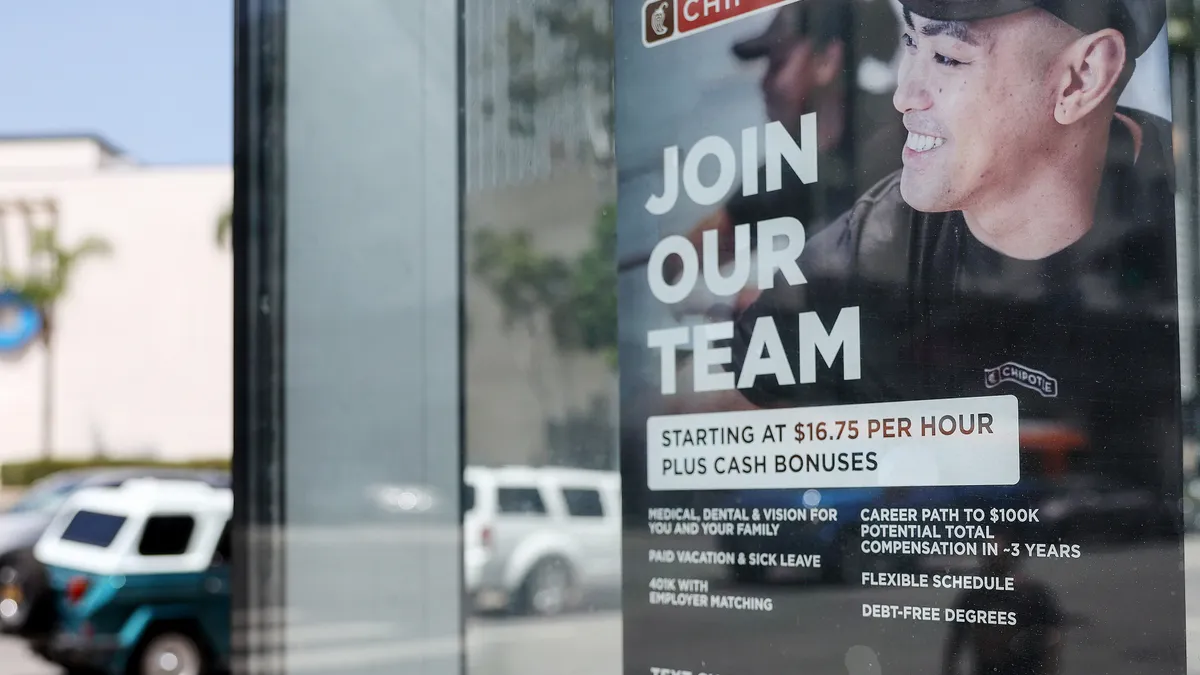Overall cost increases of healthcare benefits will hold steady at 6%, the National Business Group on Health announced—but increases that are held in place are, alas, still increases. Sustainability of healthcare may be under threat, and if prices continue to rise at current rates, it could put serious pressure on healthcare affordability for employers, the CEO and President of the NBGH, Brian Marcotte, said.
Or, to put it simply: Sooner or later, something's got to give.
The NBGH annual report provides employers an outlook on the direction the change may be going. For the first time since the report began, specialized pharmacy was considered the No. 1 cost driver for healthcare spend, reflecting a general industry focus on specialized healthcare issues overall. To tackle these problems, employers are reaching for new tools that serve their general populations and provide high-touch care to their employees with more specific and specialized healthcare problems.
HR Dive spoke with industry experts on to better understand what is going on and how employers are best solving these problems.
Cost pushers: Growing prescription spend, patient responsibility
Specialty prescriptions tend to be the very expensive drugs that cost $1,000 or more per dose, are challenging to dispense and have complex care management needs, Marcotte explained.
But employers may be asking: Why now? It's not like specialty prescriptions are a completely new entity.
Ten years ago, many Americans were participating in more traditional healthcare plans with many co-pays, said Jeff Oldham, Vice President of Consumer Strategy at Benefitfocus, so when they purchased specialty drugs, the drugs seemed cheap. Now that consumer-directed healthcare plans (CDHPs) have grown in adoption, more employees are seeing the full-cost of such drugs.
"When people didn't previously need to be engaged, they didn't ask the right questions," he said. "Now they are far more interested in understanding the price of drugs."
In turn, more employers are trying to manage the high costs as well as employee needs by creating specialty pharmacies, creating certain specialty tiers in pharmacy plans and generally paying more attention to employees who require such services, the NBGH report said. In particular, there is renewed focus on paying attention to where employees go for treatment, and potentially pushing employees to cheaper high-quality locations instead (a stand-alone clinic versus a hospital, for example).
Plan design "is not the silver bullet," Oldham said. It's the same old problem of the new healthcare age: Employees have to be willing to change their behaviors, too. Often, money is the only way to encourage that change, which is one reason why CDHP adoption may have spurred employers to take a second look at their pharmacy programs.
Growth of specialized wellness and wellness tools
Employers are increasingly focusing on "high touch" care management programs. For example, opioid restriction and management has garnered more attention this year due to various reports on opioid abuses and concerns.
But in order to maintain such programs, employers are turning to third-party wellness management tech to ensure their success.
"I was in the wellness space almost 10 years ago, and employers were blindly throwing money away when they didn’t have a good understanding of core conditions that were impacting their healthcare spend," Oldham said. Now, more employers are using wellness tools to understand the top five or 10 conditions that could be affecting employees.
One powerful tool that has emerged as more employers adopt wellness programs is the telephonic consult. Telehealth is "commonplace" now for most large employers, NBGH reports. By 2019, 97% of large employers are projected to have some form of telehealth in play. That rise is explained due to its cost-effectiveness. A $150 urgent care visit can be reduced to a $40 teleconsult, Marcotte noted, especially if an employee has a simple care need, like a cold or sinus infection.
Telehealth has also seen use in mental and behavioral benefit spaces, alongside the usual suspects of EAPs and self-help electronic resources, the NBGH report adds.
But the biggest trend that Oldham noticed is that more and more companies are putting effort into owning wellness data — literally. For a long time, most employers depended on insurance carriers to provide wellness data (BMIs, biometric screenings) and programming. Now, more employers are conducting research and analysis, and are "far better" at understanding their data, Oldham said — which means more focus on specialized forms of care.
"I think employers right now, when it comes to wellness, they have far more questions," he added. That's a good thing. It means that more wellness programs actually bring about outcomes.
Drilling down: The rise of concierge services and consumer choice tools
As always, wellness and healthcare programs struggle with engagement, Marcotte said. In turn, many of the new wellness technologies focus on grabbing employee attention and integrating all of an employer’s offerings. Consumer choice tools are a common example of this.
Another set of tools growing in popularity: concierge services. These tools are being used to address either specialty conditions or more broad health concerns, Marcotte said. Typically, concierge services provide employers with one phone number or access point that employees can use to gain information about their benefits and, in many cases, set up appointments. Trained nurses usually respond to the calls, and can assist in managing an employee's case.
Oldham was optimistic about such tools as well. He praised their "bedside manner-type approach" and the way such programs actually lean away from automation. A real nurse often does the research and work to connect employees to what they need.
"It's not inexpensive," he said, "but if I am a large employer, there are intense productivity gains." Especially if an employee doesn't have to search for a specialist while on the clock.
HealthAdvocate is one company that provides a concierge-like service. Their specialists are trained to ascertain the "hidden questions" — issues employees may have but won't ask about outright at first. Such programs seem to be particularly effective for those with untreated mental health issues, especially in contrast to the typical EAP.
"EAPs dig their own hole," Bert Alicea, vice president, EAP+Work/Life Services at HealthAdvocate, told HR Dive in June. Their focus on utilization does them in, he notes, and is part of the reason why such programs come with considerable stigma and engagement issues.
Instead, HealthAdvocate and other concierge services present themselves as a "resource" for employees, a way for an employee to overcome a "temporary set-back" no matter what is going on in their current life.
"The one model of wellness, advocacy and one-stop shopping, it can help get behind the many issues employees have," Alicea said. "And many of those are medical issues."





















